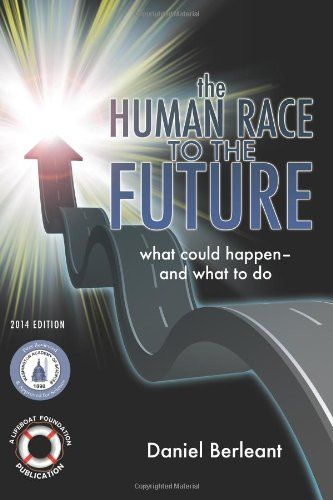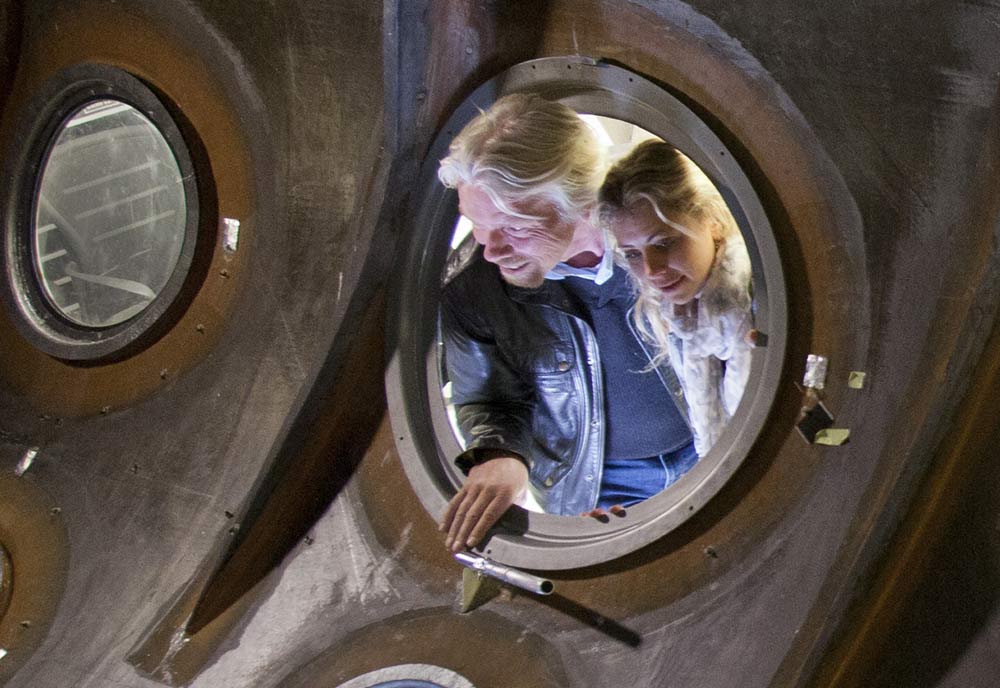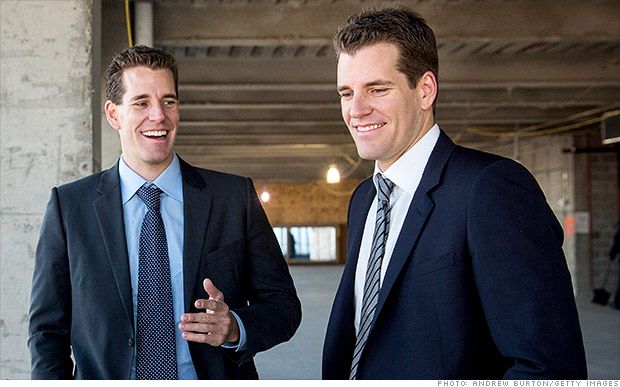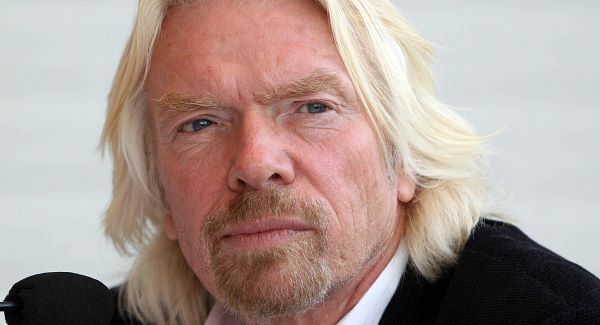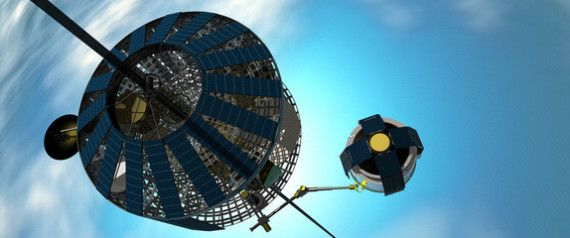LIST OF UPDATES (FEBRUARY 24 THROUGH MARCH 02/2014). By Mr. Andres Agostini at The Future of Scientific Management, Today! At http://lnkd.in/bYP2nDC
Brain signals from a primate directly move paralyzed limbs in another primate ‘avatar’
http://www.kurzweilai.net/brain-signals-from-a-primate-directly-move-paralyzed-limbs-in-another-primate-avatar
Rice’s carbon nanotube fibers outperform copper
http://www.kurzweilai.net/rices-carbon-nanotube-fibers-outperform-copper
Single-chip device to provide real-time ultrasonic 3D images from inside the heart and blood vessels
http://www.kurzweilai.net/single-chip-device-to-provide-real-time-ultrasonic-3d-images-from-inside-the-heart-and-blood-vessels
Researchers create powerful muscles from fishing line, sewing thread
http://www.kurzweilai.net/researchers-create-powerful-muscles-from-fishing-line-sewing-thread
The Future of World and Technology in 2030
http://vivatechnics.com/global/the-future-of-world-and-technology-in-2030/
Grandma’s Experiences Leave a Mark on Your Genes
http://discovermagazine.com/2013/may/13-grandmas-experiences-leave-epigenetic-mark-on-your-genes#.UwueOYVUOHd
Q&A with Martin Whist: Designing RoboCop’s Reboot
http://discovermagazine.com/2014/march/18-the-man-behind-robocops-reboot
Scientists Bring Extinct Mouth-Brooding Frog Back to Life After 30 Years
http://inhabitat.com/scientists-bring-extinct-mouth-brooding-frog-back-to-life-after-30-years/
Computer robots will outsmart humans within 15 years, Google director claims (and a giant laboratory for artificial intelligence is already planned)
http://www.dailymail.co.uk/sciencetech/article-2565948/Computer-robots-outsmart-humans-15-years-Google-director-claims-giant-laboratory-artificial-intelligence-planned.html
Microsoft Said to Cut Windows Price 70% to Counter Rivals
http://www.bloomberg.com/news/2014-02-22/microsoft-said-to-cut-windows-price-70-to-counter-rivals.html
Are the robots about to rise? Google’s new director of engineering thinks so…
http://www.theguardian.com/technology/2014/feb/22/robots-google-ray-kurzweil-terminator-singularity-artificial-intelligence
5 Reasons Why Big Data Will Crush Big Research
http://www.forbes.com/sites/onmarketing/2013/12/03/5-reasons-why-big-data-will-crush-big-research/
Scientists ‘freeze’ light for an entire minute
http://themindunleashed.org/2014/02/scientists-freeze-light-entire-minute.html?utm_content=buffer60f8d&utm_medium=social&utm_source=linkedin.com&utm_campaign=buffer
Facebook will lose 80% of users by 2017, say Princeton researchers
http://www.theguardian.com/technology/2014/jan/22/facebook-princeton-researchers-infectious-disease
Stanford’s New Pomegranate Super Batteries Could Store 10 Times More Juice
http://inhabitat.com/stanfords-new-pomegranate-super-batteries-could-store-10-times-more-juice/
Web Analytics Trends for 2014
http://www.atomrain.com/it/it/web-analytics-trends-2014
Bitcoin is not just digital currency. It’s Napster for finance.
http://finance.fortune.cnn.com/2014/01/21/bitcoin-platform/
Did A Russian Scientist Really ‘Cure Aging’ or Is It Just a Fluke?
Did A Russian Scientist Really ‘Cure Aging’ or Is It Just a Fluke?
Map of the World key to full immersion in geospatial data
http://fcw.com/articles/2014/02/18/map-of-the-world-key-to-full-immersion-in-geospatial-data.aspx
When Will My Car Fix Istelf Using Wireless Uploads?
When Will My Car Fix Istelf Using Wireless Uploads?
The lie detector for your TWEETS: Scientists develop system that can tell fact from fiction in 140 characters or less
http://www.dailymail.co.uk/sciencetech/article-2562919/A-lie-detector-TWEETS-Scientists-develop-tell-fact-fiction-140-characters-less.html
Don’t read War & Peace with your Google Glass…yet
http://www.publishingtechnology.com/2014/02/dont-read-war-peace-with-your-google-glassyet/
Henry Ford Gave Innovators The Wrong Message About The Value Of History
http://www.forbes.com/sites/johnowrid/2014/02/21/henry-ford-gave-innovators-the-wrong-message-about-the-value-of-history/
The Office Of The 21st Century Will Be Your Self-Driving Car
http://www.fastcodesign.com/3026652/the-office-of-the-21st-century-will-be-your-self-driving-car
An Amazing Village Designed Just For People With Dementia
http://gizmodo.com/inside-an-amazing-village-designed-just-for-people-with-1526062373
Scientists Turn Off Pain Using Nothing But Light
http://gizmodo.com/scientists-turn-off-pain-using-nothing-but-light-1526906564
UA Researchers Use 3D Printing to Help Fight Cancer
UA Researchers Use 3D Printing to Help Fight Cancer
Concrete and Climate Change – the Greening of Infrastructure
Concrete and Climate Change – the Greening of Infrastructure
Stephen Hawking: Humanity Must Colonize Space to Survive
http://www.space.com/20657-stephen-hawking-humanity-survival-space.html
Stephen Hawking: “Why We Should Go Into Space“
http://www.nss.org/resources/library/spacepolicy/hawking.htm
Incredible Technology: How Future Space Missions May Hunt for Alien Planets
http://news.yahoo.com/incredible-technology-future-space-missions-may-hunt-alien-114833845.html
Exoplanets: New missions hunting for alien worlds
http://www.bbc.com/future/story/20130829-the-new-hunt-for-alien-worlds
Five alien worlds with water detected by Hubble Space Telescope
http://www.sott.net/article/269546-Five-alien-worlds-with-water-detected-by-Hubble-Space-Telescope
Drake equation: How many alien civilizations exist?
http://www.bbc.com/future/story/20120821-how-many-alien-worlds-exist
DARPA Seeking Automated Decision Aids for Pilots and Battle Managers in Contested Environments
http://www.darpa.mil/NewsEvents/Releases/2014/02/21.aspx
Radiation-free cancer scans may be on the horizon
http://news.cnet.com/8301-11386_3-57619153-76/radiation-free-cancer-scans-may-be-on-the-horizon/
3 Ways Social Media Is Driving A Business Revolution
http://www.forbes.com/sites/drewhendricks/2014/02/25/3-ways-social-media-is-driving-a-business-revolution/
Your Twitter Search Results Will Now Feature Promoted Accounts
http://www.fastcompany.com/3026918/fast-feed/your-twitter-search-results-will-now-feature-promoted-accounts?partner=rss&utm_source=feedburner&utm_medium=feed&utm_campaign=Feed%3A+fastcompany%2Fheadlines+%28Fast+Company%29
Apple Doesn’t Need a Mega-Acquisition to Think Bold
http://www.slate.com/blogs/moneybox/2014/02/25/apple_mega_acquisition.html
How Millennials Are Changing the Face of Consumer Marketing
http://www.v3im.com/2014/02/how-millennials-are-changing-the-face-of-consumer-marketing/#axzz2uNRMOFdc
Not Your Typical Hackathon: Symantec’s Cyberwar Simulation Transforms Employees Into Criminals
http://www.fastcompany.com/3026749/not-your-typical-hackathon-symantecs-cyberwar-simulation-transforms-employees-into-criminals
How Cloud Computing is Changing Many Job Descriptions
http://www.forbes.com/sites/joemckendrick/2011/12/26/cloud-computing-is-changing-many-job-descriptions/
Are We Measuring Methane Accurately in Calculating GHG Emissions?
Are We Measuring Methane Accurately in Calculating GHG Emissions?
An Artificial Hand with Real Feeling
http://www.technologyreview.com/photoessay/524676/an-artificial-hand-with-real-feeling/
The Dawn of the Age of Artificial Intelligence
http://www.theatlantic.com/business/archive/2014/02/the-dawn-of-the-age-of-artificial-intelligence/283730/
Monetizing the Internet of Things : 4 key areas of focus
http://siliconangle.com/blog/2014/02/24/monetizing-the-internet-of-things-4-key-areas-of-focus/
25 maps and charts that explain America today
http://www.washingtonpost.com/blogs/govbeat/wp/2014/02/24/25-maps-and-charts-that-explain-america-today/
Newest Air Force One aircraft to arrive in 2017
http://www.gsnmagazine.com/article/17880/newest_air_force_one_aircraft_arrive_2017
Lie detector on the way to test social media rumours
http://www.bbc.co.uk/news/technology-26263510
Future green technology concept
http://itechfuture.com/future-green-technology-concept/
The Google Smartwatch Is Real, And It’s Coming Soon (But Maybe Not Too Soon)
The Google Smartwatch Is Real, And It’s Coming Soon (But Maybe Not Too Soon)
Self-forming liquid metal just like a TERMINATOR emerges from China lab
http://www.theregister.co.uk/2014/02/21/liquid_metal_breakthrough_brings_our_robot_overlords_one_step_closer/
Fear of Being Different Stifles Talent
http://hbr.org/2014/03/fear-of-being-different-stifles-talent/ar/1?utm_campaign=Socialflow&utm_source=Socialflow&utm_medium=
Researchers hijack cancer migration mechanism to ‘move’ brain tumors
http://www.kurzweilai.net/researchers-hijack-cancer-migration-mechanism-to-move-brain-tumors
New wireless tech may radically transform mobile video streaming
http://www.kurzweilai.net/new-wireless-tech-may-radically-transform-mobile-video-streaming
Graphene found to efficiently absorb radio waves
http://www.kurzweilai.net/graphene-found-to-efficiently-absorb-radio-waves
Will plug-in electric cars crash the electric grid?
http://www.kurzweilai.net/will-plug-in-electric-cars-crash-the-electric-grid
The Future of the News Business: A Monumental Twitter Stream All in One Place
The Future of the News Business: A Monumental Twitter Stream All in One Place
Exiles on Main Street: When Ordinary People Resist the Oil-pocalypse
http://www.huffingtonpost.com/reverend-billy/resisting-the-oil-pocalypse_b_4855437.html?utm_hp_ref=green&ir=Green&utm_source=twitterfeed&utm_medium=twitter
PM/AM: Citizen Science Goes Mobile
http://www.popularmechanics.com/how-to/blog/pmam-citizen-science-goes-mobile-16530992?click=pm_latest
The Missed Opportunity in STEM Education
http://www.huffingtonpost.com/dr-sten-odenwald/the-missed-opportunity-in-stem-education_b_4832030.html
‘Space-Based’ Astronomy From Antarctica
http://www.forbes.com/sites/brucedorminey/2014/02/25/space-based-astronomy-from-antarctica/
Two Explorers Just Completed A Polar Expedition That Killed Everyone The Last Time It Was Attempted
http://www.businessinsider.com/british-explorers-make-world-record-for-longest-polar-expedition-on-foot-2014-2
NASA to launch satellite in collaboration with ISRO
http://www.ndtv.com/article/india/nasa-to-launch-satellite-in-collaboration-with-isro-488328
Dad May Join Two Moms for Disease-Free Designer Babies
http://www.bloomberg.com/news/2014-02-25/dad-may-join-two-moms-for-disease-free-designer-babies.html
Tiny Blobs and Tunnels in Meteorite Revive Debate Over Life on Mars
http://www.nbcnews.com/science/space/tiny-blobs-tunnels-meteorite-revive-debate-over-life-mars-n38431
How Millennials Can Better Prepare For Today’s Workforce: 10 Critical Steps
http://www.forbes.com/sites/kathycaprino/2014/02/22/how-millennials-can-better-prepare-for-todays-workforce-10-critical-steps/
Average Chinese Getting Richer
http://linkis.com/dlvr.it/Hzx4C
Swiss Company Turns Human Ashes Into Diamonds
Swiss Company Turns Human Ashes Into Diamonds
Why China can’t take over the world
http://qz.com/162690/why-china-cant-take-over-the-world/
How to Get a Job at Google
Nanopatterned natural biological scaffold for stem cells may allow for softer engineered tissues
http://www.kurzweilai.net/nanopatterned-natural-biological-scaffold-for-stem-cells-may-allow-for-softer-engineered-tissues
Offshore wind farms could tame hurricanes before they reach land, Stanford-led study says
http://www.kurzweilai.net/offshore-wind-farms-could-tame-hurricanes-before-they-reach-land-stanford-led-study-says
Major enigma solved in atmospheric chemistry
http://phys.org/news/2014-02-major-enigma-atmospheric-chemistry.html
Pine forest particles appear out of thin air, influence climate
http://phys.org/news/2014-02-forest-particles-thin-air-climate.html
Local Motors to Debut 3D Printed Car in September
http://www.engineering.com/3DPrinting/3DPrintingArticles/ArticleID/7214/Local-Motors-to-Debut-3D-Printed-Car-in-September.aspx
Rossetta’s Portrait Above Mars
http://www.engineering.com/DesignerEdge/DesignerEdgeArticles/ArticleID/7210/Rossettas-Portrait-Above-Mars.aspx
There is no Engineer in CAD!
http://www.engineering.com/DesignSoftware/DesignSoftwareArticles/ArticleID/7208/There-is-no-Engineer-in-CAD.aspx
Lotus Debuts its First Motorbike — The C-01
http://www.engineering.com/DesignerEdge/DesignerEdgeArticles/ArticleID/7200/Lotus-Debuts-its-First-Motorbike–The-C-01.aspx
Fastest Wire Bending in the World
http://www.engineering.com/Videos/VideoPlayer/tabid/4627/VideoId/3337/Fastest-Wire-Bending-In-The-World.aspx
Braigo — the Lego-made Braille printer built by a twelve year old
http://www.engineering.com/DesignerEdge/DesignerEdgeArticles/ArticleID/7201/Braigo–the-Lego-made-Braille-printer-built-by-a-twelve-year-old.aspx
Stretchable Optical Circuits Have Futuristic Possibilities
http://www.engineering.com/DesignerEdge/DesignerEdgeArticles/ArticleID/7194/Stretchable-Optical-Circuits-Have-Futuristic-Possibilities.aspx
10 ways mobile technology will save your life in the future
http://www.cnn.com/2014/02/25/business/10-ways-mobile-technology-will-save-your-life/?hpt=hp_c1
Boundless Natural Gas, Boundless Opportunities: Interview with EIA Chief
http://blog.cleantechies.com/2014/02/24/boundless-natural-gas-boundless-opportunities-interview-with-eia-chief/
Brain Scans Show Striking Similarities Between Dogs and Humans
http://www.wired.com/wiredscience/2014/02/dog-brains-vocal-processing/
Record number of test tube babies born in the U.S.
http://www.impactlab.net/2014/02/19/record-number-of-test-tube-babies-born-in-the-u-s/
A Solar Energy Breakthrough:
http://youtu.be/J_zzE8xMdZc
A Solar Energy Breakthrough:
http://youtu.be/J_zzE8xMdZc
A new breed of research is trying to Moneyball the least logical of all human endeavors: love.
http://www.slate.com/articles/double_x/doublex/2014/02/the_science_of_relationships_predicting_love_one_data_point_at_a_time.html
Wearable computers could act like a sixth sense
http://www.computerworld.com/s/article/9246582/Wearable_computers_could_act_like_a_sixth_sense?pageNumber=1
3D printing takes on metal at Amsterdam lab (w/ video)
http://phys.org/news/2014-02-3d-metal-amsterdam-lab-video.html#ajTabs
QUOTATION(S): “…To every man there comes in his lifetime that special moment when he is figuratively tapped on the shoulder and offered a chance to do a very special thing, unique to him and fitted to his talents. What a tragedy if that moment finds him unprepared or unqualified for the work which would be his finest hour…”
AND
“…Change is not merely necessary to life ─ it is life…”
AND
“…The mind is a terrible thing to waste…”
CITATION(S): “…If you like where events seem to be headed, you may want to take timely action to preserve their positive trajectory. If you do not like where they appear to be going, you will have to develop and implement policies to change their trajectory…”
AND
“…Because time is real, and the future unpredictable, the challenge of carving a path into the future calls for a different way of thinking than the old, mechanical methods of strategic planning. In order to anticipate wholly new industries like the personal computer industry, it’s not enough to make predictions based on old assumptions. You need to imagine alternative scenarios based on new assumptions. You need to imagine alternative scenarios based on new assumptions. Those new assumptions need more than new numbers…”
NEWEST, PRACTICAL PRINCIPALS (TENETS) TO SEIZE SUSTAINABLE PROFESSIONAL, MANAGERIAL AND BUSINESS SUCCESS TENTES: (24) Don’t copy Nature and Biology, don’t even copy Universe. Just copy the Omniverse.
BOOK(S): The Black Swan: The Impact of the Highly Improbable: With a new section: “On Robustness and Fragility… by Nassim Nicholas Taleb (ISBN-13: 978–0812973815).
N.B.: Quotations, Citations and Success Tenets are by the Futuretronium Book.
Regards,
Mr. Andres Agostini
Risk-Management Futurist and Success Consultant
http://lnkd.in/bYP2nDC
